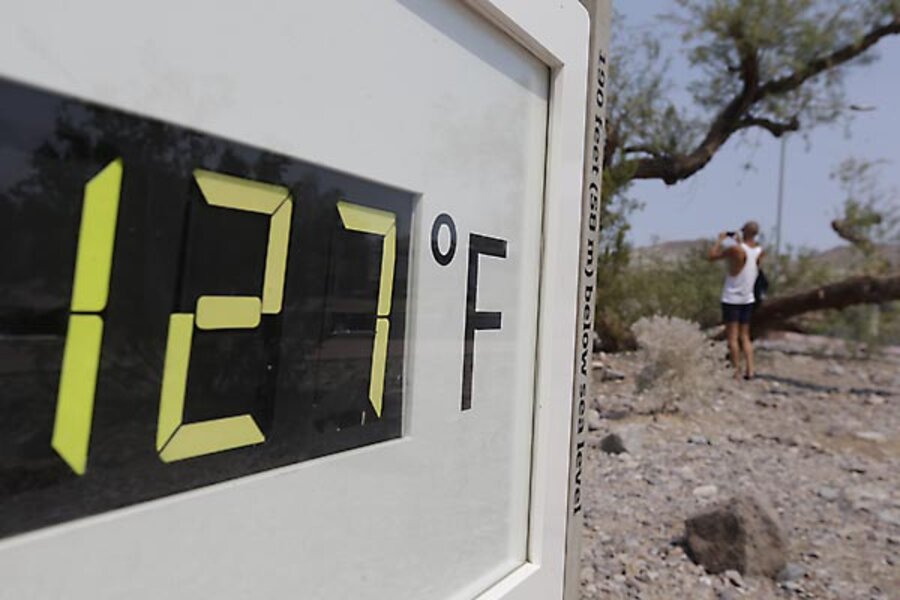How hot is the heat wave? Very, very hot
Loading...
The heat wave gripping the western U.S. is one of the worst in years, with desert locations in the Southwest seeing temperatures approach 120 degrees. To give some perspective, here are five facts about the punishing nature of the heat.
DEATH VALLEY
The desert valley in California will see temperatures approach 130 degrees. The hottest temperature ever recorded on Earth occurred in Death Valley with a reading of 134 degrees, almost 100 years ago to the day in 1913. The park is dotted with locations such as Furnace Creek and Dante's View, and officials are urging people to exercise extreme caution. But sweltering heatis often a big draw for visitors to Death Valley National Park — especially tourists from Europe — with hotels already booked solid during the hotter months of July and August.
BE CAREFUL
As if temperatures nearing 120 degrees weren't bad enough, it's even hotter inside cars and on concrete and asphalt roads and sidewalks. It can get to 200 degrees on asphalt during peak summer temperatures, presenting all sorts of hazards. Drivers should keep pets and children out of locked cars, and a person who suffers a fall on a sidewalk or a street could end up in the burn unit.
PETS
It's common in cities like Phoenix to see pet owners place booties on the paws of their dogs to keep the animals from burning on the blazing heat of streets and sidewalks. As a result, pet owners are urged to walk their dogs during morning and evening hours to protect them from the heat.
AIRLINES
Bigger jetliners can handle temperatures around 126 and 127 degrees, but airlines are closely monitoring the conditions and smaller planes may have flights delayed. When the temperature gets real hot, the air becomes less dense and changes liftoff conditions.
NO ESCAPE
The easiest way to beat the heat in cities such as Phoenix is to flee the desert for higher-elevation mountain cities such as Flagstaff, Sedona and Prescott. But there won't be much of a break from during this hot spell. Flagstaff could approach the record Saturday of 97 degrees, and Sedona could be in the 110 range.







